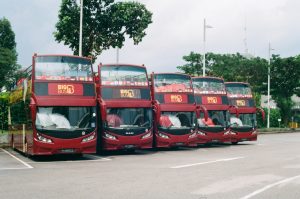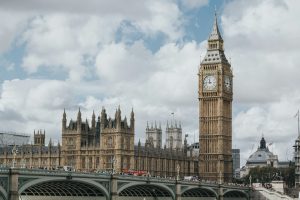Introduction
Australia is a vast island continent located in the Southern Hemisphere, known for its diverse landscapes, unique wildlife, and multicultural cities. It is the world’s sixth-largest country by land area, featuring everything from tropical rainforests and arid deserts to pristine beaches and modern urban centers. Famous for landmarks such as the Sydney Opera House, the Great Barrier Reef, and Uluru, Australia is a popular destination for nature lovers, adventure seekers, and cultural explorers.
- Planning Your Sailing Adventure
Before setting sail around the Whitsunday Islands, effective planning is essential. Start by deciding the duration of your trip and the type of sailing experience you want. You can choose between a bareboat charter—where you skipper your own yacht—or a skippered charter with a crew. For those with limited sailing experience, skippered charters offer peace of mind and local expertise. Most trips start from Airlie Beach, the main hub for sailing charters, with plenty of tour operators and charter companies offering a range of boats, from compact sailing yachts to luxury catamarans. - Best Time to Sail: Seasons and Weather
The Whitsundays enjoy a tropical climate, but the best sailing conditions are typically between May and October, during the dry season. This period offers consistent trade winds, lower humidity, and minimal rainfall. November to April can bring higher temperatures and the possibility of cyclones, especially in January and February. Monitoring weather forecasts daily during your trip is critical, and always have a backup plan for anchorages in case conditions shift. - Choosing the Right Boat
Selecting the right vessel is central to your enjoyment and comfort on the water. Catamarans are popular for families and groups, offering spacious living areas, shallow drafts (great for beach anchoring), and more stability in choppy conditions. Monohulls, on the other hand, provide a more traditional sailing experience and are often preferred by purists. Consider your group size, level of experience, and budget when choosing a boat. Most charters include safety briefings and orientation to familiarize you with the onboard systems. - Navigation and Marine Charts
While GPS and digital tools are available on modern charter vessels, understanding how to read paper marine charts and local guides is still important. The Whitsunday Islands are surrounded by coral reefs, shallow sandbanks, and environmentally sensitive areas. Knowing how to interpret tide schedules and navigation markers helps avoid running aground or entering restricted zones. Keep your charts handy and plan your route ahead of time, factoring in safe anchorage locations and distances between islands. - Top Destinations and Sailing Highlights
There are countless breathtaking spots to visit while sailing the Whitsundays. Whitehaven Beach, located on Whitsunday Island, is a must-see with its famous white silica sand and clear turquoise waters. Head to Hill Inlet for a panoramic view of swirling sands at low tide. Nara Inlet offers calm waters and ancient Aboriginal rock art, while Butterfly Bay and Blue Pearl Bay on Hayman and Hook Islands are superb snorkeling and diving spots, rich in coral and marine life. Every island offers something different, from hiking trails to secluded bays perfect for overnight mooring. - Anchoring and Mooring Practices
Sustainable anchoring is essential for protecting the marine ecosystem. Many popular bays offer public moorings to prevent damage to coral reefs. Use them whenever possible, and avoid anchoring near reef edges or in sensitive seagrass areas. Always check tide charts to prevent your vessel from becoming grounded, and allow enough scope for changing wind and current conditions. Proper anchoring technique and etiquette not only protect the environment but also ensure a peaceful night’s sleep on the water. - Provisioning for the Journey
Being well-prepared with provisions is key to a successful sailing trip. Stock up in Airlie Beach before you depart—local supermarkets and provisioning services can deliver directly to your boat. Bring enough food and water for your trip, plus extra in case of delays. Consider easy-to-cook meals, snacks, and pre-prepared dishes. Don’t forget essentials like reef-safe sunscreen, insect repellent, garbage bags, and reusable containers. Waste disposal is strictly regulated, so plan to bring all your rubbish back to shore or dispose of it at designated facilities. - Marine Life and Environmental Responsibility
The Whitsundays are part of the Great Barrier Reef Marine Park, home to a rich variety of marine life including turtles, manta rays, clownfish, and humpback whales during the migration season (June to September). When snorkeling or diving, remember the reef-safe mantra: look, but don’t touch. Avoid chasing marine animals, and never stand on coral. Fishing is allowed in some zones, but regulations must be followed closely—check current zoning maps and restrictions before casting a line. Sustainable sailing ensures this incredible ecosystem is preserved for future generations. - Safety and Communication
Safety on the water is paramount. Your vessel should be equipped with life jackets, a VHF radio, a first-aid kit, flares, and an EPIRB (Emergency Position Indicating Radio Beacon). Conduct a safety check every morning and ensure all passengers know what to do in an emergency. Stay in regular contact with your charter company, who will often request daily position updates. If you’re out of range, satellite messengers can be a helpful backup. Always have a plan B in case you need to divert or shelter from bad weather. - Embracing the Whitsundays Lifestyle
Sailing the Whitsunday Islands is about more than just getting from one anchorage to the next—it’s about immersing yourself in the pace and rhythm of island life. Wake up with the sunrise over the sea, explore uninhabited beaches, snorkel directly off your boat, and end the day with a sunset drink on deck under a sky full of stars. The freedom of sailing lets you explore remote places at your own pace, far from the crowds. Whether you’re chasing adventure, tranquility, or a little of both, the Whitsundays offer a world-class sailing experience that balances natural wonder with complete relaxation.
Where to stay in Australia
- Sydney
- Where to stay: Central Business District (CBD), The Rocks, Darling Harbour, Bondi Beach
- Types: Luxury hotels (e.g., Shangri-La), boutique hotels, serviced apartments, budget hostels
- Why: Close to iconic sights like the Sydney Opera House and Harbour Bridge, plus beaches and vibrant nightlife.
- Melbourne
- Where to stay: CBD, Fitzroy, St Kilda, Southbank
- Types: Trendy boutique hotels, stylish apartments, budget hostels, luxury hotels
- Why: Known for art, cafes, laneways, and cultural events, plus proximity to the Great Ocean Road.
- Great Barrier Reef (Cairns, Port Douglas, Airlie Beach)
- Where to stay: Cairns (for reef tours), Port Douglas (luxury and nature), Airlie Beach (gateway to Whitsundays)
- Types: Resorts, eco-lodges, budget hotels, backpacker hostels
- Why: Access to reef snorkeling/diving and tropical rainforests.
Things to do in Australia
- Explore the Great Barrier Reef
Dive or snorkel among vibrant coral reefs and marine life in the world’s largest coral reef system, located off the coast of Queensland.
- Visit Sydney’s Iconic Landmarks
Climb the Sydney Harbour Bridge, tour the Sydney Opera House, and relax at Bondi or Manly Beach.
- Experience the Outback and Uluru
See the stunning red rock monolith Uluru at sunset, learn about Aboriginal culture, and explore the nearby Kata Tjuta rock formations.
Day trip from Australia
From Sydney:
Blue Mountains National Park
Just about 1.5–2 hours west of Sydney, the Blue Mountains offer stunning cliffs, waterfalls, and eucalyptus forests. Highlights include the Three Sisters rock formation, Scenic World rides, and walking trails like the Wentworth Falls track.
From Melbourne:
Phillip Island
Around 90 minutes from Melbourne, Phillip Island is famous for its nightly Penguin Parade, where you can watch little penguins waddle ashore. You’ll also find koalas, beautiful beaches, and the rugged Nobbies coastline.
From Brisbane:
Moreton Island
Just an hour’s ferry ride from Brisbane, Moreton Island is a sand island with amazing snorkelling, sand dunes for tobogganing, and dolphin feeding at Tangalooma Resort.




